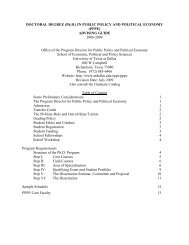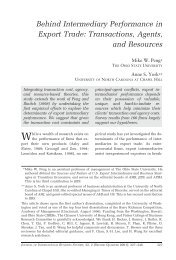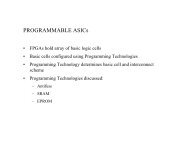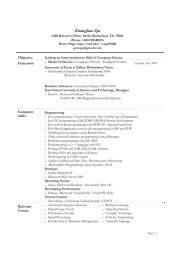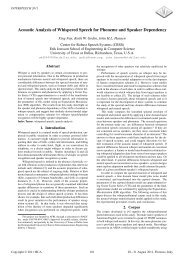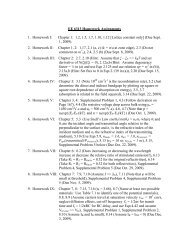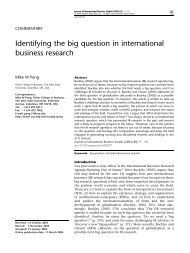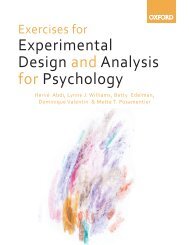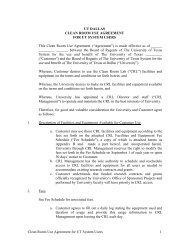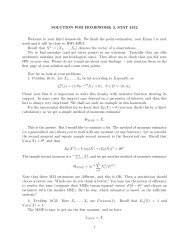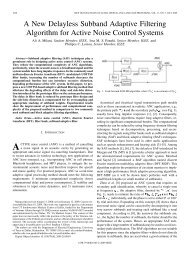OPRE 6302 on 20 March 2008 - The University of Texas at Dallas
OPRE 6302 on 20 March 2008 - The University of Texas at Dallas
OPRE 6302 on 20 March 2008 - The University of Texas at Dallas
Create successful ePaper yourself
Turn your PDF publications into a flip-book with our unique Google optimized e-Paper software.
Q3. UT Drill is a drill bit producer established by some UTD MBA students. UT Drill buys 5 cm l<strong>on</strong>g blank drill<br />
bits and shapes them with drill p<strong>at</strong>terns (like twist, mas<strong>on</strong>ry, lip, spur) by using a l<strong>at</strong>he. <strong>The</strong>n UT Drill packages<br />
12 different drills in to a single box and sells them to the Lowe’s Home Improvement stores in <strong>Texas</strong>. UT Drill<br />
requires 3000 blank drill bits every m<strong>on</strong>th and buys each bit <strong>at</strong> $0.05 and each box <strong>at</strong> $0.60. It costs $12 UTD<br />
Drill to initi<strong>at</strong>e an order from any <strong>of</strong> its suppliers. <strong>The</strong> holding costs are based <strong>on</strong> an annual interest r<strong>at</strong>e <strong>of</strong> 12%.<br />
[8pts] a) Determine the optimal number <strong>of</strong> drill bits th<strong>at</strong> UT Drill should purchase and the time between these<br />
purchases.<br />
ANSWER: R= 3000/m<strong>on</strong>th. P = ∞. K=1<strong>20</strong>0 cents. h = 5(0.01) = 0.05 cents. <strong>The</strong>n<br />
<br />
2KR<br />
EOQ =<br />
h<br />
=<br />
<br />
2 · 1<strong>20</strong>0 · 3000<br />
=<br />
0.05<br />
√ 2 · 1<strong>20</strong>0 · 3000 · <strong>20</strong> = √ 2 · 12 · 3 · 2 ∗ 1000 = 12, 000.<br />
Time between orders is<br />
Length <strong>of</strong> an Inventory Cycle = Q/R = 1<strong>20</strong>00/3000 = 4 m<strong>on</strong>ths.<br />
[4pts] b) Wh<strong>at</strong> is the annual holding and ordering cost for blank drill bits?<br />
ANSWER:<br />
Total m<strong>on</strong>thly cost = C(Q = EOQ; P = ∞) =<br />
1<br />
EOQ h<br />
2 <br />
+<br />
KR<br />
EOQ<br />
<br />
Inventory holding cost per m<strong>on</strong>th Set up cost per m<strong>on</strong>th<br />
= 1<br />
1<strong>20</strong>0 · 3000<br />
1<strong>20</strong>00 · 0.05 +<br />
2 1<strong>20</strong>00<br />
= 300 + 300 = 600 cents,<br />
or since optimal order is used, Total m<strong>on</strong>thly cost= √ 2KRh = √ 2 · 1<strong>20</strong>0 · 3000 · 0.05 = √ 1<strong>20</strong>0 · 300 = √ 36 · 100 =<br />
600. <strong>The</strong>n the annual cost is $72= 6 · 12.<br />
[4pts] c) Determine the optimal number <strong>of</strong> package boxes th<strong>at</strong> UT Drill should purchase.<br />
ANSWER: R= 3000/12 per m<strong>on</strong>th. P = ∞. K=1<strong>20</strong>0 cents. h = 60(0.01) = 12 · 0.05 cents. <strong>The</strong>n<br />
EOQ =<br />
<br />
2KR<br />
h<br />
=<br />
<br />
2 · 1<strong>20</strong>0 · 3000/12<br />
12 · 0.05<br />
= 1 √<br />
2 · 1<strong>20</strong>0 · 3000 · <strong>20</strong> =<br />
12<br />
1 √<br />
2 · 12 · 3 · 2 ∗ 1000 = 1, 000.<br />
12<br />
[4pts] d) <strong>The</strong> forecaster <strong>at</strong> UT Drill has made a mistake in computing the m<strong>on</strong>thly blank drill bit demand which<br />
is actually 5000 per m<strong>on</strong>th. Wh<strong>at</strong> is the annual holding and ordering cost for blank drill bits when the purchase<br />
quantity in a) is used with the correct demand <strong>of</strong> 5000 per m<strong>on</strong>th? Basically, upd<strong>at</strong>e your comput<strong>at</strong>i<strong>on</strong>s in b).<br />
ANSWER:<br />
Total m<strong>on</strong>thly cost = C(Q = EOQ; P = ∞) =<br />
1<br />
EOQ h<br />
2 <br />
+<br />
KR<br />
EOQ<br />
<br />
Inventory holding cost per m<strong>on</strong>th Set up cost per m<strong>on</strong>th<br />
= 1<br />
1<strong>20</strong>0 · 5000<br />
1<strong>20</strong>00 · 0.05 +<br />
2 1<strong>20</strong>00<br />
= 300 + 500 = 800 cents.<br />
<strong>The</strong>n the annual cost is $96= 8 · 12. Note th<strong>at</strong> here we are computing the cost <strong>of</strong> ordering suboptimally in 1<strong>20</strong>00<br />
units. <strong>The</strong> formula √ 2KRh cannot be used when the order quantity is suboptimal.



